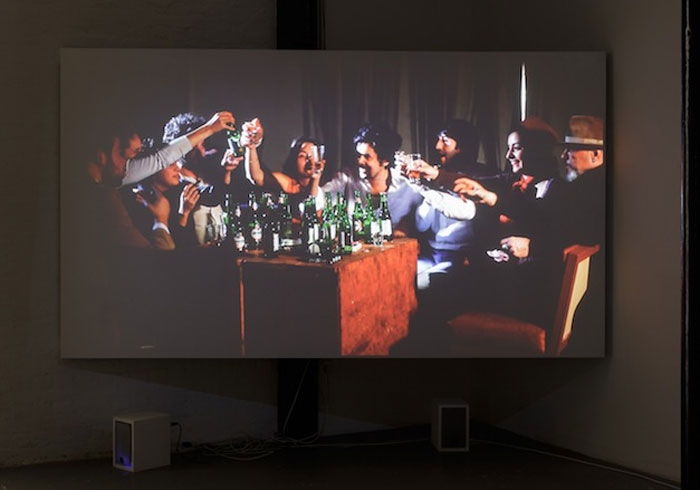David Roberts Art Foundation (DRAF), London 5 May – 29 July
During the past few years Lisbon has emerged as a casually dressed art outpost where experimentation and conviviality are prized over the commerce that dominates suited-and-booted market centres. There curators Luís Silva and João Mourão’s not-for-profit Kunsthalle Lissabon has been welcoming international artists to make work in a sunny, small and affordable city.
Their modus operandi seems particularly attuned to the Portuguese capital’s social and economic landscape, foregrounding ‘DIY ethics and aesthetics’, institutional critique and the political potential of collaboration and friendship. They see ‘sociability’ as a ‘curatorial tool’, putting the process behind a show on equal footing with what’s in the gallery. Silva and Mourão, the tenth guest curators at DRAF, face the task, then, of not only conveying their thematic interests, but of translating energies generated in another, quite different place.
Exploring collective action, Greater than the Sum begins with a tea party and ends with a piss-up. Laure Prouvost’s GDM future franchise (2017) reimagines the museum as a tearoom tribute to her fictionalised granddad. Multispouted teapots sit on tables balanced on stacks of art-historical tomes: a cute pun on the critical support structures that bolster traditional museums.
Other works take a questioning approach to collaboration and rethinking rules, in both art institutions and the society they reflect. Céline Condorelli invites visitors to say ‘to hell with health and safety’, and climb her old-furniture assemblage to see Amalia Pica’s stamp drawings installed high on the wall. It echoes John Lennon’s much-mythologised first encounter with Yoko Ono, when he climbed a ladder to read ‘yes’, written in tiny letters, on a piece of paper affixed to the ceiling. Pica’s drawings however use rubber office stamps that record when an item has been paid for, received or delivered to create imagery that includes flowers and abstract patterns. Anyone hoping for creative connection is met with global capitalism’s workaday machinery, the hollow endnote of the economic liberalism that John and Yoko’s creed of individualism could be seen to have enabled.
Similarly, Diogo Evangelista looks at a previous era’s dreams with open eyes: his silhouettes of nude gymnasts are upscale versions of figures gleaned from magazines about an early-twentieth-century German naturist movement, one of the failed utopias that foreshadowed the Nazis’ far darker dream of forging the world anew.
The show’s final work, Mounira Al Solh’s video installation Dinosaurs (2012), captures the heady, volatile nature of group activity, with her friends reenacting, in Arabic, hard-drinking scenes from John Cassavetes movies. Yet for the majority of the audience, the untranslated dialogue ensures that what is witnessed is less a traceable narrative and more a changing of moods: from boozy conversational highs to strip-bar alienation.
Such works rehearse a nimble debate about the potential and pitfalls of friendship as an agent of change. However, for anyone looking for the exhibition text’s promise of ‘the public materialisation of friendships produced by the institution’, there is little that suggests precisely what makes Kunsthalle Lissabon’s approach distinct. As Al Solh’s revellers imply, friendship is a nebulous, shifty creative force, one that happily evades fixed exhibition spaces.
From the September 2017 issue of ArtReview
